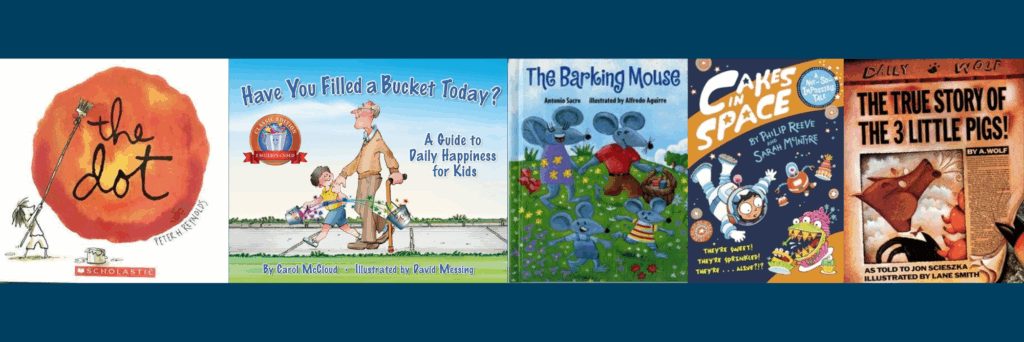September 8, 2024 / Esther Choy
 What does a chief designer of a global tech company actually do? How did a pot scrubber play a pivotal role in her career? Why does she ask the stunningly simple question, “Tell me more,” nearly everyday?
What does a chief designer of a global tech company actually do? How did a pot scrubber play a pivotal role in her career? Why does she ask the stunningly simple question, “Tell me more,” nearly everyday?
All of these questions and more are answered in my interview with Logitech’s Chief Design Officer Malin Leschly. When I interviewed Leschly about building trust with the people you are leading for a recent Forbes article, I never imagined our conversation would cover so many different topics, and so richly. In this Q & A with Malin Leschly you will hear her speak about authenticity, storytelling, design, and mentoring. I hope you enjoy it as much as I did!
Esther Choy:
What does the Chief Design Officer actually do? What does your day to day look like?
Malin Leschly:
The day to day is very varied. Because the Chief Design Officer, fundamentally, looks at the experiences that we create, and makes sure that that experience encompasses everything that we stand for and what we want the user to get out of that experience.
I am the chief officer of creating experiences that balance craft, creativity, and constraints, and a deep, deep understanding of user insights. So in my day-to-day job, it’s all about the experiences, and the user insights. And then the craft, the design disciplines where we have industrial designers, colors, material finishes, user experience, designers, and all of that. And then the constraints because fundamentally, we are a company. We want to do this at scale. We have sustainability ambitions, inclusivity ambitions.
So it’s managing and balancing all of that. And so some days, I’m all into design and review. Some days, it’s all business. Some days I’m out with teens. It’s very varied, which I love. Because what drives me is curiosity and learning. I love that. So it’s the perfect dream job.
EC:
In an article where you are asked about your leadership style, you answered that you tried to listen. Why is listening important when you are the leader?
ML:
For a couple of reasons. First, because good ideas can come from anywhere. And it’s very important to listen, because only then will you pick up the good ideas. The second one is: I believe in listening. Because there are the stories and narratives that we tell ourselves. And then there’s often the real stories, right?
This is also why I’m passionate about storytelling just like you because we use stories to make sense of the world. And so they’re the stories that we tell ourselves, and only by really, really listening, can you go beyond the first story to understand more. And that is very helpful for me both as a team leader, but also in design.
So I tend to listen a lot. And because I’m curious, because I’m motivated by learning. That’s an easy one for me because I am really curious. I often respond even if people are frustrated, “Tell me more. Where’s that coming from?” Because I find that question asks without judgment, without preconceived notions, without assumptions. Sometimes it’s about not what I think it is, or even what the person thinks it is. But it’s about something else. And so I think of listening as a superpower.
EC:
You’re only one person. How do you get your teams to also embrace a storytelling mindset?
ML:
I am a big believer in making the implicit, explicit; making our norms, our expectations and our behaviors explicit. It’s super important in a company like Logitech. We’re a global company and as a global company, we bring our own cultural assumptions, our ways of working or understandings of day to day. We might have very different communication styles. What’s funny in one country may not be funny in another culture. References might be very different. And so I lead and I manage with a focus on listening and positive intent. Assume positive intent.
It’s not about being a pushover. It’s about really understanding the way someone might see the world. Let’s not assume we know the way someone else sees the world, because there’s so much richness in all of us. It’s super important in a global company to really lean into that.
EC:
Can you share an example of how storytelling makes the implicit explicit?
ML:
One of the most powerful demonstrations on how storytelling can make the implicit explicit is a technique called Visual Thinking Strategies (VTS). It’s deployed with great success in places as diverse as Harvard Medical School, Fidelity Investments, as well as in the Creative & Design organization at Logitech where we educate our teams on how to use it. VTS relies on serial storytelling, prompted by three simple questions: “what’s going on in this picture”, “what do you see that makes you say that” and “what more can we find.” At Logitech we do our Creative and Design reviews using VTS techniques. The power of VTS is that by focusing single-mindedly on the stimuli at hand, implicit assumptions, beliefs and truths surface, without judgment. For creatives and designers in a global organization, it’s an incredibly powerful tool.
EC:
As a leader, it’s important to tell our stories in ways that help our teams understand our values and priority better. Can you share a story that you shared that has helped your team understand you?
ML:
For a Women’s History panel, I was asked how my heritage shaped my career. And the story I shared was that I connected with my heritage early, but perhaps not in the way that one would think. My parents were passionate travelers, and so rather than being home celebrating a typical holiday like Swedish midsummer, we were traveling around Europe by car. On these trips being asked where we were from and hearing others’ perceptions of Sweden shaped my sense of heritage. At that time equality, design, and making people’s everyday lives easier were all aspects of my heritage that others brought up as unique characteristics of Sweden, and it made me aware of aspects of my heritage that I would not have reflected on otherwise.
And I distinctly remember the day when all of that came together into an experience in one object, and where the implicit became explicit. I was at a summer camp on a farm in the Swedish countryside, on after-dinner clean-up duty. It fell on me to scrub the big pot. In Sweden we clean our dishes with a brush (I didn’t yet know that cleaning with a sponge was considered the normal thing to do in other parts of the world) and I was struggling to remove the crusted leftovers at the bottom of the pan. A fellow camper standing next to me said “Turn the brush around.” “Around?” I said with confusion, thinking she might be teasing me. And she reached over and showed me that there was a sharp edge at the end of the brush, that made removing the crusty, stuck food so easy. I so vividly remember thinking to myself – wow, someone actually thought of this experience, how this edge would make it easier for anyone to clean their dishes. It would take me years to actually end up in a design career, but that was the inflection moment for my heritage and my career to come together.
EC:
Why is it important for leaders to tell stories?
ML:
It’s about connection, I think. And I think it goes back to storytelling being sense making. For the people that we lead to make sense of the stories that we tell — both the explicit stories that we tell, but the implicit stories that we tell, how we lead, how we show up — there needs to be connection and a deeper understanding of the person.
And so getting a peek about the person behind the story, I think is helpful. It’s fundamental. It’s through the connection that we understand and that we make sense. I’m often told that as a leader, I’m perceived as being direct and transparent. What you see is what you. Because I share things. I don’t hold back on certain things. And the way I tell stories is about authenticity.
Better Every Story
Leadership Transformation through Storytelling
"This is an amazing and insightful post! I hadn’t thought of that so you broadened my perspective. I always appreciate your insight!" - Dan B.
Get Esther Choy’s insights, best practices and examples of great storytelling to your inbox each month.




